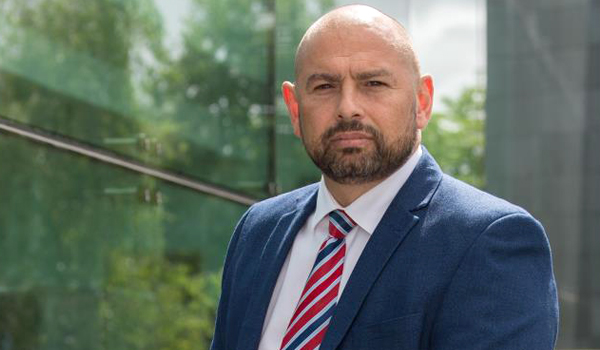UK police still the most restrained despite increasing assaults, says PFEW
The Police Federation of England and Wales (PFEW) says the latest figures showing a sharp increase in police use of force must be seen in the context of an “unacceptably high cases of violence against police officers”.
Home Office statistics released today (December 17) show there were 492,000 recorded uses of force for the year to March 2020 – a rise of 64,000 on the previous year.
However, in the same period, the PFEW says there were 30,679 recorded assaults on police officers in England and Wales – the equivalent of 84 every day.
PFEW national vice-chair Ché Donald said: “We must read these statistics in relation to the steady increase in assaults on officers. During the period this data covers, almost 20,000 offences were charged under the Assaults on Emergency Workers (Offences) Act – three-quarters of which were assault by beating. Nine out of ten of these cases were police officers.
“The statistics show that UK policing is one of the best trained and most restrained, using their expertise to protect themselves in an increasingly dangerous job. I make no apology for my colleagues doing the best they can to keep the public, themselves and colleagues safe. The vast majority of people appreciate and understand what we do.”
Taser was used in 32,000 incidents, but crucially was not discharged in 86 per cent of cases. Total Taser use is up 37 per cent on the previous year and most of the increase (88 per cent) was in non-discharge uses.
The PFEW says a Taser uplift has seen more officers than ever given access to this “life-saving piece of kit” thanks to its successful lobbying.
It says there has also been an increase in the recording of Taser use due to improved and simpler methods of doing so.
Other findings include:
- There were 715,000 use of force tactics reported in 492,000 incidents;
- The most common impact factor was the person being under the influence of alcohol (180,000 incidents, 37 per cent); and
- The most common outcome was the person being arrested (376,000 incidents, 76 per cent)
Restraint was the most common tactic type. The majority involved handcuffing, which was recorded in 70 per cent of all use of force incidents (350,000 times in 492,000 incidents).
However, the Association of Police and Crime Commissioners (APCC) is concerned that the data also suggests that force is being used against a “disproportionately high number” of black people and other minority ethnic communities.
The Home Office figures show use of force tactics, ranging from handcuffing and ground restraint, to the use of batons, CEDs (Conducted Energy Devices such as Taser) and firearms, “involved people perceived as being from a black ethnic group at a rate five times higher than people perceived as being from a white ethnic group in English and Welsh police force areas”, excluding the Metropolitan Police Service (MPS).
The rate was almost three times higher for people perceived as being from an other ethnic group and lower for those perceived as being from an Asian ethnic group.
Those perceived as being from a black ethnic group (16 per cent of incidents) were involved in proportionally more incidents involving the use of less lethal weapons and firearms (20 per cent and 26 per cent respectively), while people perceived as being from a white ethnic group (69 per cent of incidents) were involved in proportionally less (63 per cent and 52 per cent respectively). People perceived as being from an Asian ethnic group (seven per cent of incidents) were involved in proportionally more incidents involving the use of firearms (14 per cent).
In the MPS force area, use of force tactics involved people perceived as being from a black ethnic group “at a rate four times higher than those perceived as being from a white ethnic group”, says the Home Office. The rate was more than one-and-a-half times higher for people perceived as being from another ethnic group and lower for those perceived as being from an Asian or mixed ethnic group.
However, the Home Office said the MPS also has a proportionately larger number of black, Asian and minority ethnic people resident within its police force area – 40 per cent compared with the rest of England and Wales (ten per cent) – which “can skew national level figures”.
The MPS has just launched a new video – which will be shared across its social media channels –explaining how and why police officers sometimes need to use force, which it hopes will spark more two-way conversations with the public about the use of force, including how they can give feedback about their experience.
In talking openly about the tactics, the training officers receive and the legal powers they have, the MPS says it wants the public to “feel more reassured should they see officers having to use force”.
Responding the latest Home Office figures, APCC equality, diversity and human rights lead Hardyal Dhindsa, and Race Disparity Working Group chair Julia Mulligan, said: “There are many reasons why a police officer may have to use force on a member of the public. No two incidents are identical and it is right that police officers are able to use their professional judgement and training to assess what is necessary in each case to keep themselves, their colleagues, and the public safe.
“But the data again suggests that force is being used against a disproportionately high number of black people, as well as other minority ethnic communities – a fact which contributes to some communities’ mistrust of the police and the justice system.
“Police and crime commissioners (PCCs) are elected to speak up for all communities. We scrutinise the police on their behalf through local initiatives like those detailed in the APCC’s latest In Focus report.
“Through our Race Disparity Working Group, the APCC will continue to develop our response to these issues and concerns, enabling PCCs to address race disparity both locally and nationally.”







